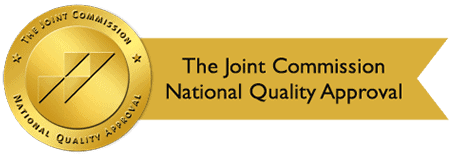By: Design for Change Recovery
Categories:
Deadliest Illicit Drugs in the US Today
You are here:The Problem of Illicit Drugs Usage
Understanding the issues and potential issues with various drugs is not always clear. At times, something will be introduced commercially to be later removed from wide usage once the dangerous impacts have become clear. In the case of drugs labeled “illicit,” sufficient evidence has been brought to show the danger of physical and physiological issues that these drugs can cause. Some drugs, such as nicotine in cigarettes or alcohol, have negative effects on the body, but not necessarily at the same level of addictiveness or the same danger to the body. There is also sometimes debate about whether something should be considered illicit or not, such as marijuana.
Part of the difficulty of assessing illicit drug usage has to do with the information at hand. The nature of the physical and neurological issues is not always easy to determine; sometimes, it is unclear exactly the cause of certain issues or how the substance impacted things. The rates at which deaths can be attributed to certain drugs are a little clearer, but there are often complicating factors or more than one drug involved, making things vague.
Nonetheless, what is clear, is that the drugs that have been labeled illicit are certainly of great physical, emotional, and neurological danger to individuals, and certain drugs are more dangerous than others. According to the Center for Disease Control and Prevention, the most dangerous drugs currently are illicitly manufactured fentanyl, heroin, prescription opioids, cocaine, and methamphetamine.[i]
The Five Most Dangerous Drugs
According to the current research, opioids are involved in more than 80% of drug overdose deaths in the United States, and illicitly manufactured fentanyl, heroin, cocaine, or methamphetamine are involved in nearly 85% of overdose deaths.[ii]
Illicitly Manufactured Fentanyl
Today, one of the most dangerous drugs has licit or prescribed usages but is commonly found in its illicit form. Fentanyl is a powerful synthetic opioid and can treat chronic and severe pain, often after surgery.[iii] Fentanyl works much like morphine but is 50 to 100 times more powerful. Fentanyl is incredibly potent, and its effects can include the following:
- Extreme happiness
- Drowsiness
- Nausea
- Confusion
- Constipation
- Sedation
- Problems breathing
- Unconsciousness[iv]
Fentanyl is also extremely addictive and can have significant withdrawal symptoms. Furthermore, there is a great risk of overdose when used outside of its prescribed function. Currently, synthetic opioids like fentanyl are involved in nearly 60% of the opioid-related deaths in the United States, a number that has been rising since 2010.[v]
Heroin
One of the next most dangerous illicit drugs in the United States is heroin, a drug made from morphine. Heroin can be used via injection, sniffing, snorting, or smoking; it is sometimes mixed with crack cocaine.[vi] Heroin is a hazardous drug, with many problematic short-term and long-term effects, including the following:
- Dry mouth
- Warm flushing of the skin
- Heavy feeling in the arms and legs
- Nausea and vomiting
- Severe itching
- Clouded mental functioning
- Shifting in and out of consciousness
- Insomnia
- Collapsed veins from injections
- Damaged tissue within the nose from sniffing or snorting
- Abscesses
- Constipation and stomach cramping
- Liver and kidney disease
- Lung complications
- Mental disorders, including depression and antisocial personality disorder
- Sexual dysfunction in men
- Irregular menstrual cycles in women[vii]
Prescription Opioids
Another hazardous and illicit drug also has licit and prescribed usages. In this case, these drugs are being considered “illicit” because the manner of obtaining the prescription opioids or the amounts and durations in which it is being used is beyond what has been prescribed. Medicinally, prescription opioids are used as pain relievers and can be safe when used over a short duration as prescribed by a doctor. However, they are also highly addictive and, when misuse or inappropriate used, can lead to significant health problems. Some of the harmful effects of prescription opioids include the following:
- Drowsiness
- Confusion
- Nausea
- Constipation
- Euphoria
- Slowed breathing[viii]
As with the other drugs in this list, there is a danger of withdrawal symptoms and overdose from prolonged usage of prescription opioids.
Cocaine
Our fourth illicit and dangerous drug is cocaine, a potent and addictive stimulant. Cocaine can be snorted, rubbed into the gums, or injected, and, as noted above, is sometimes combined with Heroin. As should be obvious at this point, Cocaine and these other drugs are highly addictive and can cause withdrawal effects and lead to overdose. Cocaine, like many other drugs, also affects the dopamine cycles within the brain; it’s hijacking of this process is what leads to the euphoric sensations of the drug, but is also unhealthy for the brain and body, disrupting natural processes.
Some of the short- and long-term effects of cocaine include the following:
- Extreme happiness and energy
- Mental alertness
- Hypersensitivity to light, sound, and touch
- Irritability
- Paranoia
- Constricted blood vessels
- Dilated pupils
- Nausea
- Increased body temperature and blood pressure
- Increased or irregular heartbeat
- Tremors and muscle twitches
- Restlessness[ix]
Methamphetamine
Our final deadly illicit drug is also a stimulant; methamphetamine is a powerful and addictive drug that impacts the central nervous system.[x] Methamphetamine can be consumed through smoking, swallowing, snorting, or injecting it. When used, its effects begin quickly and end quickly, leading to cycles of repeatedly and crashing. This increases the risk of forming an addiction or overdosing.
Some of the short- and long-term effects of methamphetamine include the following:
- Increased alertness
- Decreased appetite
- Increase in breathing rate
- Rapid and/or irregular heartbeat
- Increased blood pressure and body temperature
- Extreme weight loss
- Addiction
- Severe dental problems
- Intense itching
- Anxiety
- Changes in brain structure
- Confusion
- Memory loss
- Sleeping problems
- Violent behavior
- Paranoia
- Hallucinations[xi]
Sources:
- [i] CDC. “Overdose Deaths and Illicit Drugs – Urgent Need for Overdose Prevention Interventions.” Center for Disease Control and Prevention. https://www.cdc.gov/drugoverdose/pubs/featured-topics/VS-overdose-deaths-illicit-drugs.html. Accessed May 5, 2021.
- [ii] Ibid.
- [iii] NIDA. “Fentanyl DrugFacts.” National Institute on Drug Misuse or inappropriate use, 28 Feb. 2019, https://www.drugmisuse or inappropriate use.gov/publications/drugfacts/fentanyl Accessed 5 May 2021.
- [iv] Ibid.
- [v] Ibid.
- [vi] NIDA. “Heroin DrugFacts.” National Institute on Drug Misuse or inappropriate use, 21 Nov. 2019, https://www.drugmisuse or inappropriate use.gov/publications/drugfacts/heroin Accessed 5 May 2021.
- [vii] Ibid.
- [viii] NIDA. “Prescription Opioids DrugFacts.” National Institute on Drug Misuse or inappropriate use, 27 May. 2020, https://www.drugmisuse or inappropriate use.gov/publications/drugfacts/prescription-opioids Accessed 5 May 2021.
- [ix] Ibid.
- [x] NIDA. “Methamphetamine DrugFacts.” National Institute on Drug Misuse or inappropriate use, 16 May. 2019, https://www.drugmisuse or inappropriate use.gov/publications/drugfacts/methamphetamine Accessed 5 May 2021.
- [xi] Ibid.


